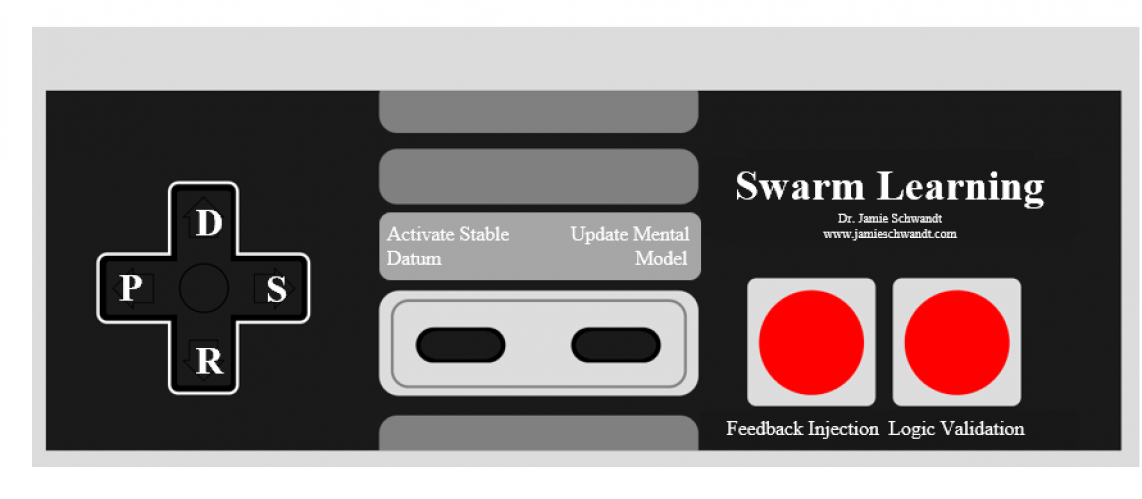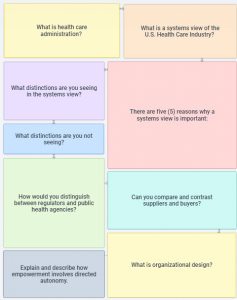What is health care administration?
Health Care Administration concentrates on the improvement of health service administration, including cost-benefit and operations research, program activities, finances, standards and monitoring the organization of health services.
Medical and health services managers, also called healthcare executives or healthcare administrators, plan, direct, and coordinate medical and health services. They might manage an entire facility, a specific clinical area or department, or a medical practice for a group of physicians. Medical and health services managers must direct changes that conform to changes in healthcare laws, regulations, and technology.
Sources:
American Public Health Association. (2019). Health Administration. Retrieved from https://apha.org/apha-communities/member-sections/health-administration
Bureau of Labor Statistics, US Department of Labor (2019, August 10). Medical and Health Services Managers: Occupational Outlook Handbook: Retrieved from https://www.bls.gov/ooh/management/medical-and-health-services-managers.htm
What is a systems view of the U.S. Health Care Industry? See Figure 1.1 on p. 10 of your textbook.
Descriptions of the health care industry in the United States often begin with a discussion of whether it is a “system.” Webster’s dictionary defines a system as a complex unity formed of many often diverse parts subject to a common plan or serving a common purpose. Clearly, the U.S. health care industry does not meet this standard. The U.S Health Care Systems View diagram shows that the multiple players have different goals (triple aim) and divergent interests (“patients need my product/service, you should pay for it,” consolidation versus competition, integrated versus niche models).
There are five (5) reasons why a system view is important:
- First, from a macro perspective, health outcomes are determined by an array of forces and factors that spans much more than a nation’s health care infrastructure. There are multiple systems frameworks that describe these forces and factors (Shakarishvili, 2009).
- Second, there are so many interdependent players that a systemic view helps to organize them and their interactions. The U.S. Health Care Systems View diagram provides such a framework for the U.S. context. Providers of health care services occupy the middle of the diagram for a specific reason: they are the main focus of everyone else.
- For the two parties in the upper-left and upper-right portions of the diagram (suppliers and buyers, respectively), two sets of intermediaries channel their services to providers. This suggests a third reason for the importance of system views. The concept of a value chain (Porter, 1985)—i.e., a firm or industry’s input, throughput, and output activities that are served by a host of support functions—suggests that value is created along this collection of activities and requires effective partnerships. Value can be created by making the appropriate make-versus-buy decisions on how much of the value chain to occupy.
- Fourth, management theory teaches that successful innovation requires concomitant changes among the system’s components (sectors) to achieve congruence or “fit” (Senge, 2006; Tushman and O’Reilly, 1997). Similar thinking has been applied to the U.S. health care system: payment reforms in the buyer sector must be accompanied by corresponding reforms in the provider delivery system.
- Fifth, organizations within the health care industry have increasingly consolidated into systems over the past two decades with the stated objective of being more efficient but may not operate as such. While mergers and acquisitions (M&A) have received a lot of attention (both by the merging firms and the media), post-merger integration activities have not. It is not clear that large multiunit systems can operate in a systemic fashion, extract scale economies from their operations, increase their productivity, add value, and address the multiple goals of access, quality, and acceptable cost.
What distinctions are you seeing in the systems view?
The interlinked “players” in the U.S. Health Care System are:
- Consumer/Patients
- Hospitals/Physicians
- Suppliers
- Buyers
- Regulators
- and Public Health Agencies.
The U.S. Health Care System View shows a vast and complex network of Regulators, Public Health Agencies, Suppliers, and Buyers flowing into or out of the Hospital/Physician industry. It appears that activities/interactions in the entire Health Care Industry are heavily focused on the medical profession.
What distinctions are you not seeing?
The U.S. Health Care System View does not show any support network for the consumers/patients independent of the Hospital/Physician system/network.
How would you distinguish between regulators and public health agencies?
Regulators oversee the quality/safety environment and competitive conduct of health care service providers (i.e. hospitals/physicians). Regulators in the U.S. Health Care System are:
- State Insurance Commissioners
- State Licensing Boards
- Food and Drug Administration
- Occupational Safety and Health Administration
- Federal Trade Commission
- Justice Department
- and Office of the Inspector General.
Public Health Agencies seek to enhance population health by financing research and educational activities undertaken by providers as well as exercising oversight generally outside the direct provision of health care services. Public Health Agencies in the U.S. Health Care System are:
- National Institutes of Health
- Department of Defense
- Centers for Disease Control and Prevention
- Environmental Protection Agency
- of Health and Human Services
- Health Resources and Services Administration
- Veterans Administration
- and Public Health Service.
Can you compare and contrast suppliers and buyers?
Buyers reimburse or pay for services rendered by providers of health care services to the Buyers’ employees/beneficiaries (consumers/patients). Buyers are:
- Insurers and Insurance Brokers
- Managed Care
- Consumer-Directed Plans
- Pharmacy Benefit Managers
- Government:
- Medicare and Medicaid
- Veterans Administration
- Indian Health Service
- Employers: Individuals/Out-of Pocket
- Philanthropy
Suppliers seek to sell Buyers their products (health care services). Suppliers are:
- Pharmaceuticals
- Biotechnology
- Medical – Surgical Supplies
- Medical Devices
- Capital
- Equipment
- Information Technology
- Group Purchasing Organizations
- Wholesalers/Distributors
- Medical Professionals/Labor
What is organizational design?
Organization design is the arrangement of responsibilities, authority, and flow of information within an organization, resulting in its organization structure.
The structure of an organization is analogous to human anatomy, with the caveat that an organization’s structure can be changed. The two closely interrelated parts to organization design are (1) how to divide the work and responsibilities and allocate them to units in an organization, and (2) how to coordinate the work of those units to perform the organization’s overall work effectively. These two parts of organization design are intimately related, because the division of labor and grouping of responsibilities directly affect the ease of achieving coordination.
It is especially important in large organizations, where the arrangement of individuals into separate groupings results in the facilitation of some flows of information and coordination while simultaneously hindering others.
Explain and describe how empowerment involves directed autonomy.
Empowerment involves “directed autonomy” whereby individuals or teams are given an overall direction yet considerable leeway concerning how they go about following that direction. It also necessitates sharing information and knowledge with employees, which enables them to understand and contribute to organizational performance and giving them the autonomy to make decisions that influence organizational outcomes (Ford and Fottler, 1995). It is the issue of power that differentiates empowerment from other approaches to employee participation (i.e., delegation, decentralization, and participatory management) that emphasize employee input, but perhaps no real change in the assignment of power and authority.
Josefina Howard’s Link to Plectica Presentation: https://www.plectica.com/maps/X7UXHI7GJ?present=1


Hi Josefina,
You did a great job with this assignment. I love how detailed your answers are on some of the questions! Including five reasons why a systematic view is important was a great idea. There are a lot of great items you included within those five reasons. I feel like the systematic view really highlights the interlockings of the different players and systems that make the health care industry what it is today. The relationship between the buyers and suppliers was something I always thought I fully understood prior to this assignment. This assignment gave us the opportunity to see how they both play such a big role within the health care industry, and how dependent they are on the hospitals and physicians. Great post!
-Lara
T
Hey Josefina,
Your map came out very clean and clear and you responses were spot on. I am still trying to grasp this way of thinking but i feel you are a great leader to follow if I have any doubts about what and how I am doing things. Thanks for being awesome!
Josefina,
I love the way you structure the map for the questions. I personally see more chaotic drawn out maps as my own thought process, but it is refreshing to see everything in it’s own corner an in such detail. Seriously the detail in this map is amazing, and I look forward to grasping future perspectives from you.
With each week I hope to see character and perspectives from everyone that keep us all having more quesitons, but ultimately having more answers as well.
This is really good! Excellent work! Thanks for sharing it with the Facebook group. I am giving you 10 extra credit points for the work and for sharing it.
Josefina,
I really liked your presentation and your thought process when answering the different questions! I hadn’t thought about the missing relationship between the consumer/patient and the other areas of the healthcare systems view. I had thought it was to show that the consumer/patient related specifically to the hospital/physicians, but when I think about it, they relate to many more distinctions of the systems view!
Great job, I enjoyed looking at the map!